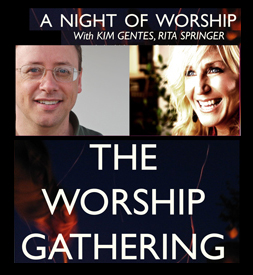Worship Tech Web Tools Blog
 This is an ongoing blog of web tools and technology related to worship, music and church. The idea is to give you good web points and resources that you can go to. Some of it is just me cruising the net, others are favorites of friends.
This is an ongoing blog of web tools and technology related to worship, music and church. The idea is to give you good web points and resources that you can go to. Some of it is just me cruising the net, others are favorites of friends.
Enjoy what you see here. If you find an interesting, useful and technology related site or resource that deals with helping worship or musicians in general, please send us a note and we will check it out. Perhaps we can feature it here.
Thanks!
Enjoy! - Kim Gentes
Entries in facebook (6)
Easy 1-2-3 for Turning Off Auto-Play On Facebook Videos (Kim Gentes/Worship Tech Blog)
 Monday, September 8, 2014 at 11:44AM
Monday, September 8, 2014 at 11:44AM Facebook is tiring sometimes. And having the videos autoplay can be annoying when you are trying to find something in the feed. How do you turn off the autoplay? This one is relatively quick and painless.
Step 1
Click on the Privacy Shortcuts (lock icon) link on the top right of most browsers using Facebook. From the options that appear, select the "See More Settings" link at the bottom of the shortcuts listed. This should lead you here: https://www.facebook.com/settings/ . It should appear as below.
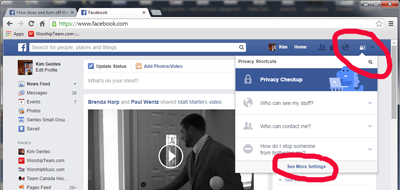
Step 2
Click on the "Videos" link at the bottom left portion of the screen among the catagories of settings. This will make the "Video Settings" tab appear. It should be located https://www.facebook.com/settings?tab=videos . It should appear as below.
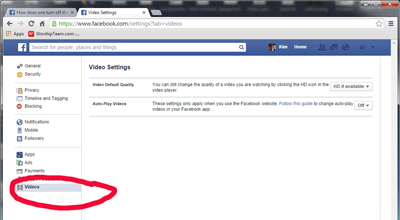
Step 3
On the "Auto-Play Videos" setting select the "Off" option. You should be good now.
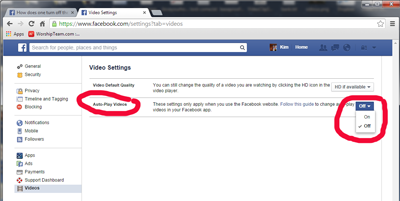
Mobile Facebook Video settings are done differently. Here is the official Facebook help on adjusting those:
https://www.facebook.com/help/633446180035470
BeatLab - Make Online Rhythm Patterns Instantly (Kim Gentes / Worship Tech Blog)
 Friday, July 15, 2011 at 7:37AM
Friday, July 15, 2011 at 7:37AM  Sometimes all you want to do is make some pattern for rhythm that you can use as a loop pattern for other things. Or maybe you are working on a quick idea and aren't at home to put it down in your music creation software or access to your instrument. Or, perhaps you are just curious as to how you can see a rhythm track in a linear format. Beatlab is an online simple tool for building basic loop tracks, much in the same core way that anyone would compose a loop for electronic music, or even lay down a rhythm section with MIDI or loop software. But it is online, simple and free to use. There are user plugins for uploading your own sounds and a lot of features once you have the basic things down. You can even download your loop for use offline, which is kind of nice.
Sometimes all you want to do is make some pattern for rhythm that you can use as a loop pattern for other things. Or maybe you are working on a quick idea and aren't at home to put it down in your music creation software or access to your instrument. Or, perhaps you are just curious as to how you can see a rhythm track in a linear format. Beatlab is an online simple tool for building basic loop tracks, much in the same core way that anyone would compose a loop for electronic music, or even lay down a rhythm section with MIDI or loop software. But it is online, simple and free to use. There are user plugins for uploading your own sounds and a lot of features once you have the basic things down. You can even download your loop for use offline, which is kind of nice.
Beatlab isn't necessarily for hard core development of songs, but I like it as an inspirational pit stop on the creative internet highway. I stop by occasionally if I have a rhythm in my head and I want to flesh it out without pulling out all my musical gear. You can save your compositions too, so you don't lose online ones you've created. It uses your Facebook credentials to store context, but it is not heavy handed (like some Facebook apps are) as it always asks if you want to post things to Facebook before doing so. I like that courtesy. One note on the technology side of this site- like almost every music app online- it does use Flash. So it won't work on your iOS devices. Just pure web folks.
Anyways for the loopers, scratchers and tweekers of the electronic and rhythm worlds, BeatLab is like stopping at Wafflehouse- not exactly the kind of meal you'd do important dates at, but it has the basics when you need to use them. And heck- its free. Check it out.
Here is a very simple loop I created with it.
I noticed a lot of other users creating more beat loops for rap and such. I prefered a bit of an electronica loop myself, but you can create whatever you want. Go try it out.
in the rhythm of heaven
Kim Gentes
 Kim Gentes |
Kim Gentes |  1 Comment |
1 Comment |  app,
app,  beat,
beat,  beatlab,
beatlab,  drum,
drum,  electronic,
electronic,  facebook,
facebook,  loops,
loops,  music,
music,  musician,
musician,  rhythm,
rhythm,  track,
track,  web in
web in  App,
App,  Facebook,
Facebook,  Flash,
Flash,  Media,
Media,  Music Training,
Music Training,  Web,
Web,  Web Applications,
Web Applications,  Web Service - Music
Web Service - Music Fixes For The Thumbnail Generation Error With Facebook "Link" (Kim Gentes / Worship Tech Blog)
 Sunday, May 8, 2011 at 1:13PM
Sunday, May 8, 2011 at 1:13PM 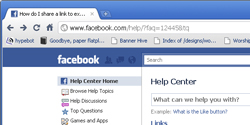 Facebook is fast becoming the hub of our online activity, as both personal and organizational communications are often easier to do through Facebook than almost any other mechanism. Need to talk to relatives? Use Facebook. Have to organize a church small group? Making a Facebook group is a cheap, and effective method to factiliate communications. Want to reach customers for your business? Facebook pages and apps are becoming very important.
Facebook is fast becoming the hub of our online activity, as both personal and organizational communications are often easier to do through Facebook than almost any other mechanism. Need to talk to relatives? Use Facebook. Have to organize a church small group? Making a Facebook group is a cheap, and effective method to factiliate communications. Want to reach customers for your business? Facebook pages and apps are becoming very important.
One of the most effective methods of quickly getting information out on Facebook is to "Link" an external page into Facebook, on a wall post or in a group or Page. Facebook nicely slurps up a summary of the external web page, blog or site and creates a thumbnail and header for the link that is easy for people to quickly see what the link is for. But there is a problem. Facebook sometimes cannot understand images that appear on external sites when the image or web page does not have interprettable or compatible properties. You will see the webpage text summary in the link preview, but not the image. It will looking something like this:
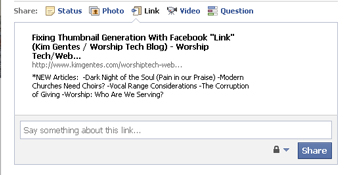
If the page had images and you don't see the image as a thumbnail option in the above preview, you will know there was a problem with the page or the image being interpretted correctly by Facebook.
If you try to link to an external page to post your link on Facebook and you find your image does NOT show up in the link summary, here are a few things you can try to get Facebook to slurp your image and place a thumbnail for your link in Facebook.
- Standard Path and Filenames - Facebook interprets linked pages by use of its own webcrawling tools (called lint, but more about that later). When its tools read your website to grab information and images, it wants to see standard URLs for images. If your image path inside of your webpage includes any spaces (either in the pathname or the filename), Facebook can fail the image slurp and hence you will not see a thumbnail.
- Website Errors - if your webpage has errors in interpretation, Facebook may fail to slurp it up properly and hence you will not see a proper summary or thumbnail. This might confuse you since your browser will appear to render the page proper- but Facebook won't like it. This is because most browsers have built in an excessive amount of forgiveness in their rendering schemes- meaning that they are able to pass over errors in the webpage and still render the rest of the webpage, despite the errors. You can check how Facebook is interpretting any link you provide it by using it's interpretation engine. Its interpretation engine is called Lint (which is actually a tool brought forward from the Unix world for many years). Here is the link to test your webpage interpretation on Facebook Lint : http://developers.facebook.com/tools/lint
- Remove slashes from webpage links to Facebook - if you submit http://www.kimgentes.com/ you may be in danger of Facebook having problems with interpretting the site correctly. Facebook prefers you submit links without ending "/"- hence submit http://www.kimgentes.com instead.
- Link Relative Image Tagging - to help Facebook Lint understand where images are, you can give it instructions by embedding your webpage with directives on where the images will be located, even before the image reference appears in the main HTML code of the page. To do this, simply include this format of a statement in the head section of your webpage
<link rel="image_src" href="http://www.kimgentes.com/storage/wg-banner-500x160-pc.jpg" />
(of course, replace the path name and image filename with your real image path information) - Image Size - one thing that Facebook likes is reasonably proportional images. Specifically, it does not like banner type (wide/short) images. If you have an image that is too wide (and short), it will dislike trying to thumbnail it. But an image that is tall and thin is much more agreeable to Facebook. See below we have provided two images. If you use Facebook to Link to this blog entry, you will notice that it only likes the tall image, and doesn't like the wide image-- you will only be given the option to use the tall image as a thumbnail selections (along with the other two images in this post). Where you should see 4 images available as thumbnails, you will only see 3 from this post. This is an example of Facebook's finicky behavior regarding image sizes.
I wish I could tell you that Facebook is consistent with all the things it does, but frankly, it just isn't. Try each of the above fixes to see what your particular situation might be. There are several other articles out there that deal with meta data tagging and image specifications, but I have found that they are rarer cases, though important to look at. For more information on addressing this issue of thumbnails in Facebook links, this is a good all around article to read:
http://www.ehow.com/how_4938148_thumbnail-show-up-facebook-share.html
Happy Facebook linking!
Kim Gentes
Facebook Uses Your Pictures in It's Ads? Yep, it's True! (Kim Gentes/ Worship Tech Blog)
 Thursday, March 31, 2011 at 1:56PM
Thursday, March 31, 2011 at 1:56PM 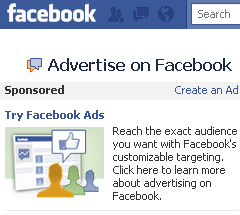 There has been a lot of conjecture lately about what Facebook does and doesn't allow regarding your pictures and advertisements. Here is the fact- if you have a profile picture, Facebook may use it to generate ads for friends of yours for 3rd party advertisements. There are a few details and specifics as to how that can/will happen, but you should know that it certainly can and does happen.
There has been a lot of conjecture lately about what Facebook does and doesn't allow regarding your pictures and advertisements. Here is the fact- if you have a profile picture, Facebook may use it to generate ads for friends of yours for 3rd party advertisements. There are a few details and specifics as to how that can/will happen, but you should know that it certainly can and does happen.
The core part of how that happens is your social interaction with various entities on Facebook. The more you "like" things on Facebook, the more likely you're name and image may be used in Facebook ads to your friends.
However, you can stop all of that simply by adjusting your Facebook settings. Like each of its other personal data intrusions, Facebook has eventually provided ways to close off their extraneous use of your personal information and image. In this case, here is the method for saying "no" to Facebook using your picture in their ads.
STEP 1- Once you are logged on to Facebook, locate the top right side of Facebook and click on the drop down (unside-down triangle) next to the word "Home". A dropdown menu will appear. Select "Account Settings" option.
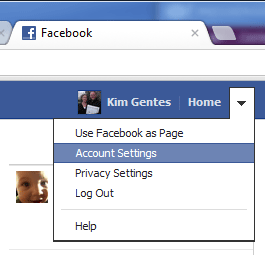
STEP 2- On the "Account Settings" page, you will notice several tabs. You will initially be on the General Account Settings tab. Change this by selecting the "Facebook Ads" tab at left margin on the bottom of the list of tabs.
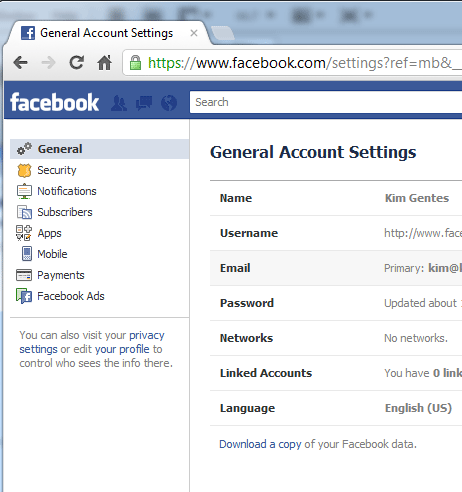
STEP 3- On the Facebook Ads page, the bottom half of the screen has a section called "Ads and friends". Select the link that says "Edit social ads settings".
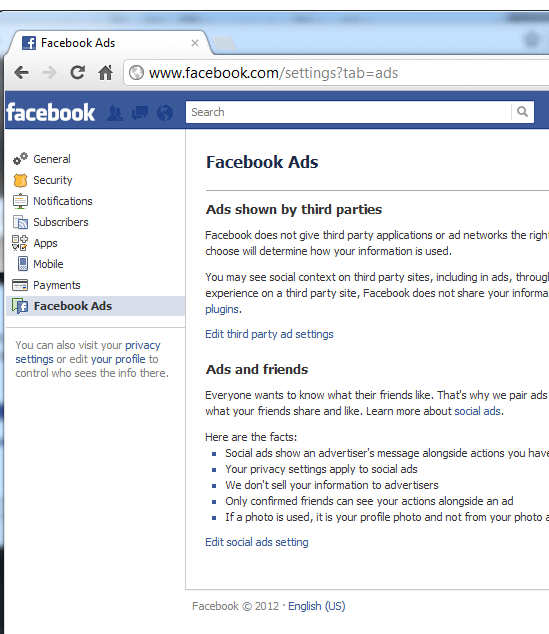
STEP 4- On the "Ads and friends" page you can read how, why and when they may use your like and profile pictures in third party ads. At the bottom, use the dropdown menu near the label "Pair my social actions with ads for ". Change the drop down to "No one".
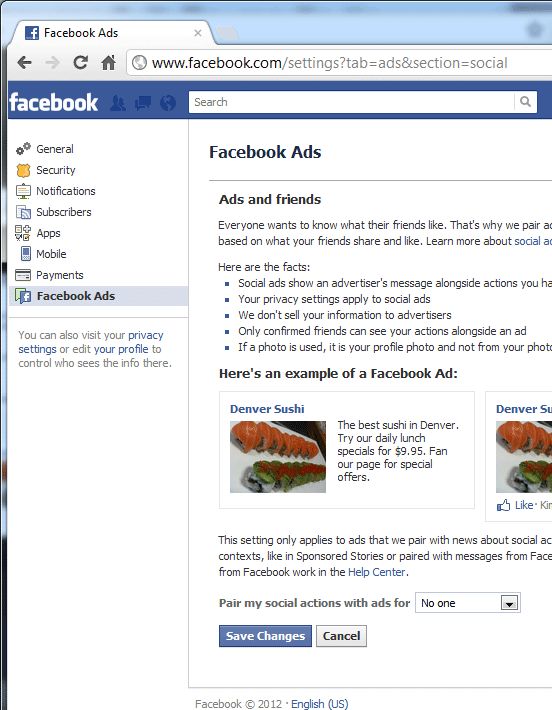
STEP 5- Click "Save Changes" at the bottom.
There you go! You have now updated your profile so Facebook won't decide to use your picture to sell your friends stuff. Well done you!
keeping the social network honest along with you,
Kim Gentes
Facebook is Now Secure to Use ?! Not So Much.
 Thursday, February 24, 2011 at 8:21PM
Thursday, February 24, 2011 at 8:21PM  OK, so Facebook now gives you the option of talking to their site over an encrypted protocol. Cool. Well, sorta. But not really. I am not saying using HTTPS is not better than straight HTTP web browsing, but if regular (non-technical) users think it will make their use of Facebook safer, they probably really don't understand what makes Facebook (or any website) truly insecure to them as users.
OK, so Facebook now gives you the option of talking to their site over an encrypted protocol. Cool. Well, sorta. But not really. I am not saying using HTTPS is not better than straight HTTP web browsing, but if regular (non-technical) users think it will make their use of Facebook safer, they probably really don't understand what makes Facebook (or any website) truly insecure to them as users.
First, Secure Sockets Layer is not new. Facebook didn't just discover it or something, it has been around since 1995 (see http://en.wikipedia.org/wiki/Transport_Layer_Security for more info). The purpose of HTTPS (the particular implementation of SSL that is being talking about) is simply so that when you are talking to a particular website that the communications directly to that site cannot be falsely interrupted, decoded, or mimicked without someone who has a very, very high level of acumen in digital security.
However, the problem with internet security is not HTTPS usage- it is almost 99% about leading legitimate web surfers to an illegitimate site. This means that there are people out there who try to get you to click on links that lead you to somewhere OTHER than where you expected to go. And once you are at their phoney site, they have you normally enter some personal data that they later use to exploit you or steal your identity.
It goes like this-
- you get a link in email that looks like it is from Facebook
- you click on it.
- you go into the site, surf around and leave
- you didn't realize that you had gone into a site that wasn't Facebook, and they stole your password and user login because you entered it to get into their fake site.
That above scenario happens in email scams with everything from Bank "notifications" (phoney ones) to Facebook updates to whatever.
The point is, SSL or HTTPS doesn't make that above situation any safer. If you followed your email links then nothing appeared to be wrong, and HTTPS operating on the real Facebook won't be of any help to you while you are logging on a phoney website that is only made to look like Facebook to steal your access.
There are really two main rules that will cover about 80% (making that figure up in my head) of your problems on Facebook or any site:
- NEVER use a link that you get in email from an organization. Instead, almost all places (like Facebook or your bank, etc) allow you to log in to their website directly, then see the notifications or items they wanted to bring to your attention. This is the MOST important safety precaution you can make on any site.
- In Facebook in particular, don't use Face Apps. Apps are developer access to you and all your information. Regardless of what the app is for, they can access EVERYTHING about your Facebook account once you approve an app. Of course, there are a few apps that people use anyways, but just know that an App can literally access any information in your Facebook context. You can see my other article on how to block Apps that may bother you.
The HTTPS thing in Facebook merely gives people a bit more safety while they surf facebook, but doesn't protect them from the above two items, which ultimately cause vastly more security and other problems. If you aren't careful enough to note click on emails from anyone that might look like Facebook in your email, then you likely aren't watching to see if you are locked secure while surfing Facebook either.
Now don't get me wrong, HTTPS settings on your login in Facebook does make that part safer. But for most users, it is the email and other links getting you to a "supposed" Facebook location that cause more problems. And once people are in Facebook, it is the propensity to use Apps (and even spoofed bad apps as well) that poses a greater risk than actually getting thread attacks into your browser during an actual session on Facebook, in my opinion.
keep on surfing safely people...
Kim Gentes
How To Block Apps From Posting To Your Facebook Wall
 Wednesday, March 3, 2010 at 8:36AM
Wednesday, March 3, 2010 at 8:36AM 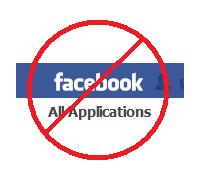 Why We Love/Hate Facebook
Why We Love/Hate Facebook
Let's be honest. We all love Facebook. We all hate Facebook. What's not to love about one place where all your various friends, family, acquaintances, work associates and relatives that live in far-away locations can all be within 15 seconds of your mouse clicks. What's not to hate about a data collection website that knows literally more about you and your behavior than just about anyone else (except maybe Google), including yourself.
But the one thing that finds the most heated angst from users is the pervasive and intrusive nature of the applications that are built into Facebook by third party developers (FB apps). Facebook apps have a particular kind of charm and power that make them exceedingly viral, and spread quickly when they are designed to catch the weary eye of users who have already spent 4 hours longer on Facebook than they should have in one day. If you think Facebook apps are all fun and you love them, you might consider this well-written (though a bit dated) article that is 99% dead-on regarding the problem with FB apps:
Exclusive: The next Facebook privacy scandal
http://www.cnet.com/8301-13739_1-9854409-46.html
OK, after taking a look at that, do you still want to keep those apps on your page? To be honest, the thing I hate most is NOT the privacy invasion (although I despise that, it is part of using the internet). The more evil thing in my mind is the constant annoyance of the APP posts to my wall- people throwing pillows, kisses and gifts that demand I respond back (which means I have to give them all my info to do so- since all APPs require it). That alone makes me wish I could band apps from my page forever. Well, it turns out you can. Almost. Here is what you can do.
Blocking FaceBook Apps That Post To Your Wall
First, each Facebook app has its own set of protocols and settings against those protocols. You can't ban all APPs in one fell swoop (Facebook knew that would be a deathknell of beautiful responsibility to its 3rd party apps-- far too user centric a move!). However, each time an APP posts something to your wall, you do have the ability to block it from ever doing that again.
Here is how to block an unwanted app:
STEP 1. When an APP makes a post to your wall or newsfeed, hover of the top right area of the region where the app posted to your wall. As you hover, you will notice an "x" appear. Click that "x", as you can see from the Family Tree post to my newsfeed below.
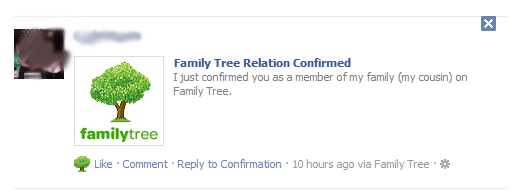
STEP 2. Once you have selected the "x", notice and select the "Block Application Name..." The phrase "Application Name" will be replaced by the name of the application you are dealing with- for example in our example here, it is Family Tree.
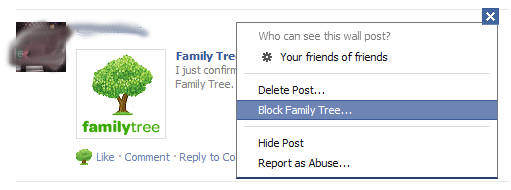
STEP 3. Of course, the app (Family Tree is our example) wants to be certain you really don't love their excessive spam and e-vomit all over your screen, so they ask you for the obligatory confirmation.
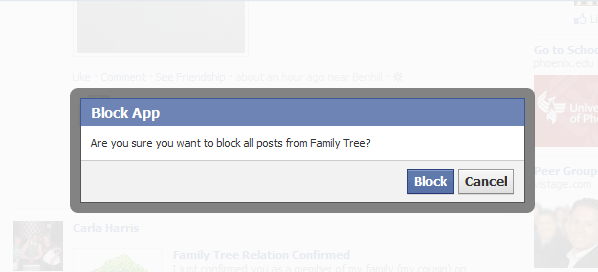
STEP 4. Now you have blocked the app. You will note that POSTS from the app are now also gone from your newsfeed. No future posts will appear in your newsfeed either.
STEP 5. Repeat. Each time a new app appears on your wall or newsfeed in Facebook you can repeat this process to block that app. Though there are hundreds of apps being used out there, only a few are used extensively, so you will find it takes just a few days and you will have encountered 99% of the apps that you will want to ban from your pages. Yahh! for blocking! Yahh!!
You are free! Free at last! Thank God! Free at last!
Doing my part to set the Facebook captives free,
Kim Gentes
 Kim Gentes |
Kim Gentes |  3 Comments |
3 Comments |  applications,
applications,  apps,
apps,  block,
block,  blocking,
blocking,  facebook,
facebook,  mafia wars,
mafia wars,  posting,
posting,  wall in
wall in  Facebook,
Facebook,  Media,
Media,  Social Media,
Social Media,  Web Applications,
Web Applications,  Web Service
Web Service 